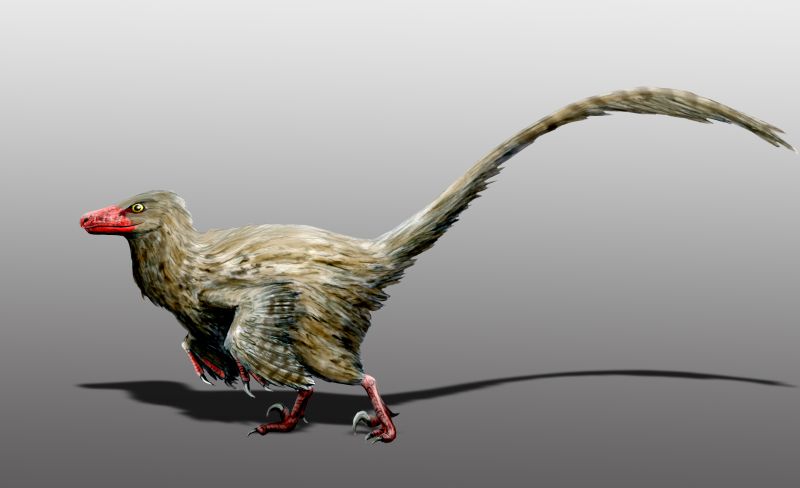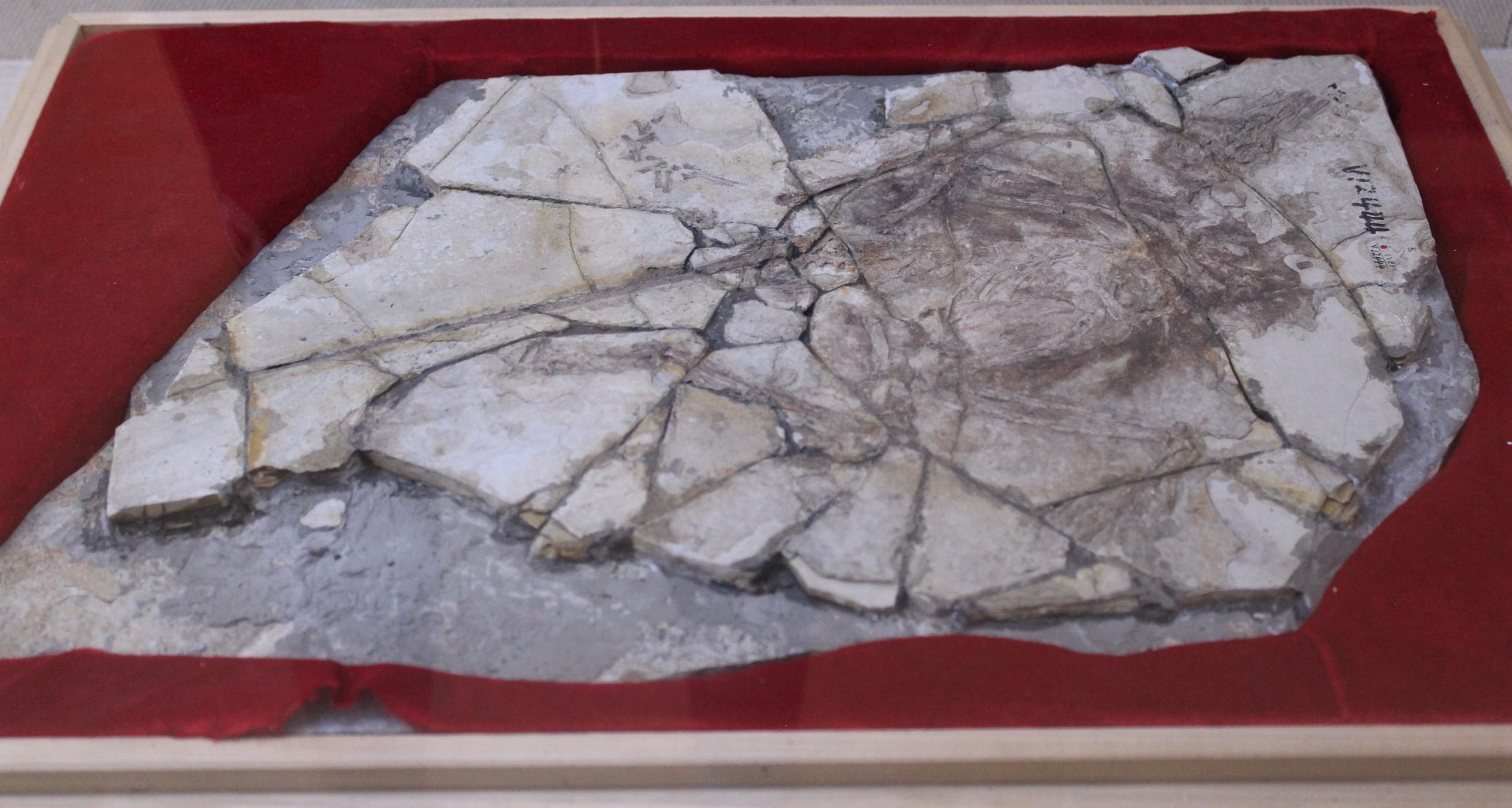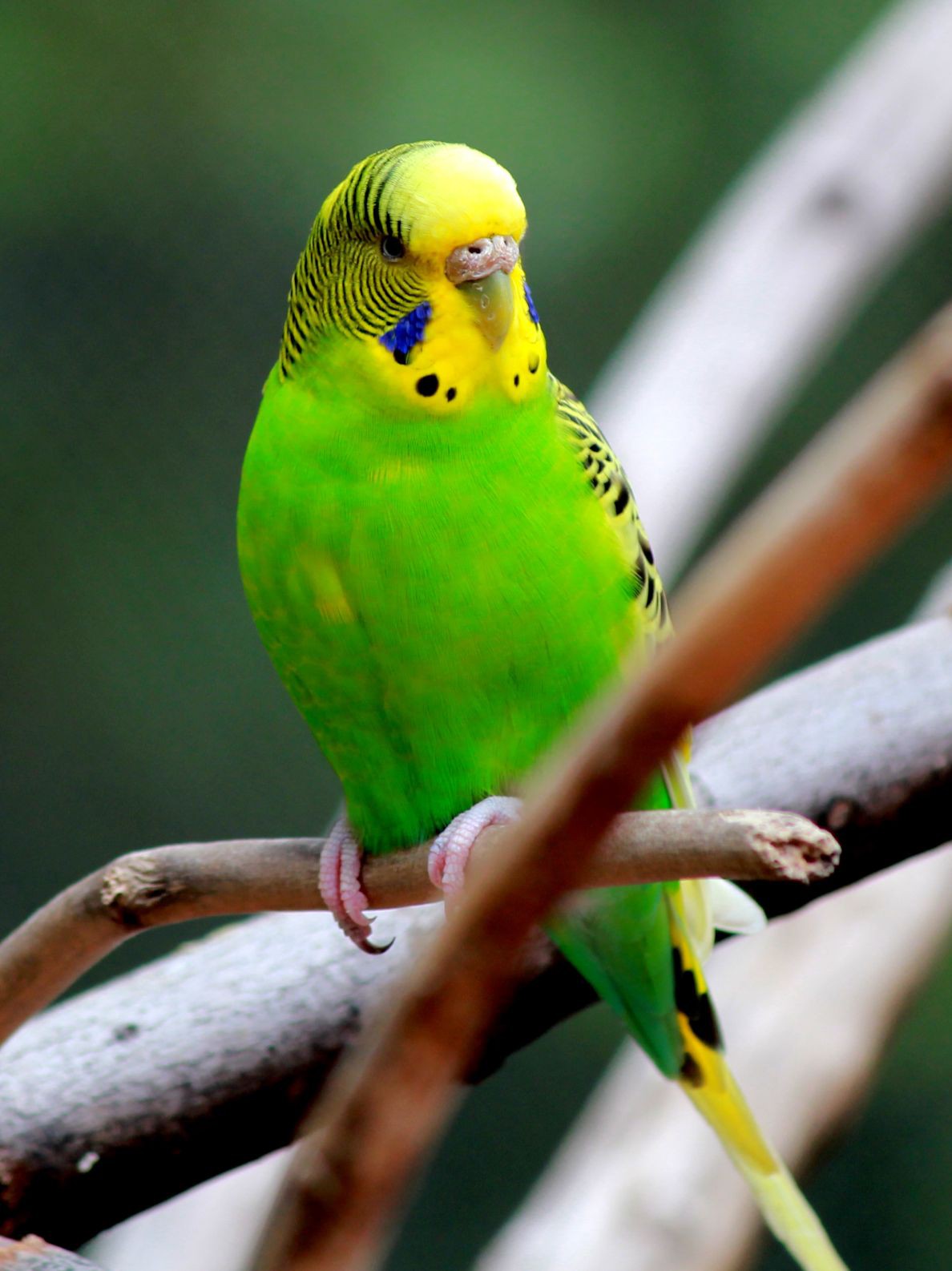|
Microraptorians
Microraptoria (Greek, μίκρος, ''mīkros'': "small"; Latin, ''raptor'': "one who seizes") is a clade of basal Dromaeosauridae, dromaeosaurid theropod dinosaurs. The first microraptorians appeared 125 million years ago in China. Many are known for long feathers on their legs and may have been semiarboreal powered fliers, some of which were even capable of launching from the ground.. Most microraptorians were relatively small; adult specimens of ''Microraptor'' range between ) and weigh up to , making them some of the Dinosaur size, smallest known nonavialan dinosaurs.Holtz, Thomas R. Jr. (2011) ''Dinosaurs: The Most Complete, Up-to-Date Encyclopedia for Dinosaur Lovers of All Ages,'Winter 2010 Appendix./ref> Description Microraptorians were a group of basal Dromaeosauridae, dromaeosaurids (popularly known as "raptors") with slender proportions and long limbs. With the exception of ''Hesperonychus'' from the late Cretaceous of North America, all microraptorians have been found ... [...More Info...] [...Related Items...] OR: [Wikipedia] [Google] [Baidu] |
Changyuraptor
''Changyuraptor '' is a genus of "four-winged", predatory dinosaurs. It is known from a single fossil specimen representing the species ''Changyuraptor yangi'', which was discovered from Early Cretaceous (125 million year old) deposits in Liaoning Province, China. ''C. yangi'' belongs to the group of dromaeosaurid theropod dinosaurs called the Microraptoria. At the time of its discovery, ''C. yangi'' was the largest four-winged dinosaur known and among the largest Mesozoic flying paravians, volant true birds seldom approaching its size.Nicholas R. Longrich; David M. Martill; Brian Andres (2018). "Late Maastrichtian pterosaurs from North Africa and mass extinction of Pterosauria at the Cretaceous-Paleogene boundary". PLOS Biology. 16 (3): e2001663. Description Analysis of the fossil at the University of Cape Town, South Africa reveals that the specimen was a fully grown adult, approximately long and estimated to weigh , roughly the size of a turkey. These dimensions make ''Chang ... [...More Info...] [...Related Items...] OR: [Wikipedia] [Google] [Baidu] |
Graciliraptor
''Graciliraptor'' (meaning "graceful thief") is a genus of theropod dinosaur from the early Cretaceous Period. It is a microraptorine dromaeosaurid. The type species ''Graciliraptor lujiatunensis'' was first named and described in 2004 by Xu Xing and Wang Xiaoling. The generic name is derived from Latin ''gracilis'' and ''raptor''. The specific name refers to the village Lujiatun where the fossil site is located. Its fossil, holotype IVPP V 13474, was found in Beipiao, Liaoning Province, China. Description The type and only known specimen comprised part of the maxilla with some teeth, nearly complete fore and hind legs; and ten partial tail vertebrae. It is estimated to have been about long in life.Holtz, Thomas R. Jr. (2011) ''Dinosaurs: The Most Complete, Up-to-Date Encyclopedia for Dinosaur Lovers of All Ages,'Winter 2010 Appendix./ref> In 2010, Gregory S. Paul gave higher estimations of one metre and 1.5 kilogrammes. ''Graciliraptor'' is extremely lightly built for a ... [...More Info...] [...Related Items...] OR: [Wikipedia] [Google] [Baidu] |
Hesperonychus
''Hesperonychus'' (meaning "western claw") was a small, carnivorous dinosaur. It was a member of the family Dromaeosauridae, along with its larger relatives ''Deinonychus'' and ''Velociraptor''. There is one described species, ''Hesperonychus elizabethae''. The type species was named in honor of Dr. Elizabeth Nicholls of the Royal Tyrrell Museum of Palaeontology who collected it as a student in 1982. It is known from fossils recovered from the lowermost strata of the Dinosaur Park Formation of Alberta, dating to the late Cretaceous (Campanian stage) about 76.5 million years ago. Though known from partial remains, researchers have estimated that it was a small dinosaur measuring about long and weighing between , making it the smallest carnivorous non-avian dinosaur known from North America. Description ''Hesperonychus'' is known from one partial pelvic girdle, holotype specimen UALVP 48778, collected by Dr. Elizabeth Nicholls in Dinosaur Provincial Park in 1982. The fossi ... [...More Info...] [...Related Items...] OR: [Wikipedia] [Google] [Baidu] |
Sinornithosaurus
''Sinornithosaurus'' (derived from a combination of Latin and Greek, meaning 'Chinese bird-lizard') is a genus of feathered dromaeosaurid dinosaur from the early Cretaceous Period (late Barremian) of the Yixian Formation in what is now China. It was the fifth non–avian feathered dinosaur genus discovered by 1999. The original specimen was collected from the Sihetun locality of western Liaoning. It was found in the Jianshangou beds of the Yixian Formation, dated to 124.5 million years ago. Additional specimens have been found in the younger Dawangzhangzi bed, dating to around 122 million years ago. Xu Xing described ''Sinornithosaurus'' and performed a phylogenetic analysis which demonstrated that it is basal, or primitive, among the dromaeosaurs. He has also demonstrated that features of the skull and shoulder are very similar to ''Archaeopteryx'' and other Avialae. Together these two facts demonstrate that the earliest dromaeosaurs were more like birds than the later dromaeosa ... [...More Info...] [...Related Items...] OR: [Wikipedia] [Google] [Baidu] |
Tianyuraptor
''Tianyuraptor'' is a genus of short-armed dromaeosaurid dinosaur ('running lizard'; a type of small dinosaur considered to be closely related to birds) that lived during the Early Cretaceous, about 122 million years ago. Its remains have been found in western Liaoning, China. It was similar to other dromaeosaurids found in Liaoning, with the exception of being somewhat more primitive. The type specimen, formally named in 2009, shows features not seen in previously known Northern Hemisphere (Laurasian) dromaeosaurids, but present in Southern Hemisphere (Gondwanan) species and early birds. Because of this, the scientists who first studied ''Tianyuraptor'' described it as a "transitional species", bridging the gap between northern and southern types of dromaeosaurid. ''Tianyuraptor'' also differs from previously known dromaeosaurids in that it possesses a relatively small furcula ("wishbone"), and unusually short forelimbs. Etymology The generic name of ''Tianyuraptor'' combines ... [...More Info...] [...Related Items...] OR: [Wikipedia] [Google] [Baidu] |
Wulong Bohaiensis
''Wulong'' (meaning "dancing dragon") is a genus of microraptorine dromaeosaurid dinosaurs from the Early Cretaceous (Aptian) Jiufotang Formation of China. It includes one species, ''Wulong bohaiensis''. The skeletal remains represent a juvenile. Discovery The holotype specimen of the dinosaur, D2933, was found by a farmer in the fossil-rich Jiufotang Formation of Liaoning Province, China. Since then the fossil skeleton has been housed in the collection of the Dalian Natural History Museum in Liaoning. The skeletal bones were analyzed by Ashley William Poust who named them as ''Wulong bohaiensis'' in a thesis in 2014.A.W. Poust. 2014. ''Description and ontogenetic assessment of a new Jehol microraptorine''. M.Sc. Thesis, Montana State University, Bozeman, Montana This name for the time being remained an invalid ''nomen ex dissertatione''. In 2020, Poust alongside his former advisor David Varricchio from Montana State University and Dalian paleontologists Gao Chunling, Wu Jianli ... [...More Info...] [...Related Items...] OR: [Wikipedia] [Google] [Baidu] |
Zhongjianosaurus
''Zhongjianosaurus'' is a genus of dromaeosaurid belonging to the Microraptoria. Believed to hail from the Yixian Formation, specifically the middle of the Jehol Biota, it is the smallest known microraptorine thus far discovered and one of the smallest non-avian theropod dinosaurs. Description ''Zhongjianosaurus'' is distinguishable from other microraptorines in the following autapomorphies. Proportionally long ossified uncinate processes are fused to the dorsal ribs. A widely arched furcula is present with slender and posteriorly curved clavicular rami. The humeral proximal end is strongly offset medially from the humeral shaft. The internal tuberosity of the humeral proximal end is short. A large fenestra perforates the humeral deltopectoral crest. The humeral ulnar condyle is hypertrophied. The ulna is slightly longer than the humerus. The ulnar olecranon process has a mediolaterally pinched posterior margin. The ulnar distal end bends anteriorly and is strongly expanded la ... [...More Info...] [...Related Items...] OR: [Wikipedia] [Google] [Baidu] |
Sinornithosaurus Dave NGMC91
''Sinornithosaurus'' (derived from a combination of Latin and Greek, meaning 'Chinese bird-lizard') is a genus of feathered dromaeosaurid dinosaur from the early Cretaceous Period (late Barremian) of the Yixian Formation in what is now China. It was the fifth non–avian feathered dinosaur genus discovered by 1999. The original specimen was collected from the Sihetun locality of western Liaoning. It was found in the Jianshangou beds of the Yixian Formation, dated to 124.5 million years ago. Additional specimens have been found in the younger Dawangzhangzi bed, dating to around 122 million years ago. Xu Xing described ''Sinornithosaurus'' and performed a phylogenetic analysis which demonstrated that it is basal, or primitive, among the dromaeosaurs. He has also demonstrated that features of the skull and shoulder are very similar to ''Archaeopteryx'' and other Avialae. Together these two facts demonstrate that the earliest dromaeosaurs were more like birds than the later dromaeosa ... [...More Info...] [...Related Items...] OR: [Wikipedia] [Google] [Baidu] |
Microraptor
''Microraptor'' (Greek, μικρός, ''mīkros'': "small"; Latin, ''raptor'': "one who seizes") is a genus of small, four-winged dromaeosaurid dinosaurs. Numerous well-preserved fossil specimens have been recovered from Liaoning, China. They date from the early Cretaceous Jiufotang Formation (Aptian stage), 125 to 120 million years ago. Three species have been named (''M. zhaoianus'', ''M. gui'', and ''M. hanqingi''), though further study has suggested that all of them represent variation in a single species, which is properly called ''M. zhaoianus''. ''Cryptovolans'', initially described as another four-winged dinosaur, is usually considered to be a synonym of ''Microraptor''. Like ''Archaeopteryx'', well-preserved fossils of ''Microraptor'' provide important evidence about the evolutionary relationship between birds and earlier dinosaurs. ''Microraptor'' had long pennaceous feathers that formed aerodynamic surfaces on the arms and tail but also on the legs. This led paleon ... [...More Info...] [...Related Items...] OR: [Wikipedia] [Google] [Baidu] |
Maastrichtian
The Maastrichtian () is, in the ICS geologic timescale, the latest age (uppermost stage) of the Late Cretaceous Epoch or Upper Cretaceous Series, the Cretaceous Period or System, and of the Mesozoic Era or Erathem. It spanned the interval from . The Maastrichtian was preceded by the Campanian and succeeded by the Danian (part of the Paleogene and Paleocene). The Cretaceous–Paleogene extinction event (formerly known as the Cretaceous–Tertiary extinction event) occurred at the end of this age. In this mass extinction, many commonly recognized groups such as non-avian dinosaurs, plesiosaurs and mosasaurs, as well as many other lesser-known groups, died out. The cause of the extinction is most commonly linked to an asteroid about wide colliding with Earth, ending the Cretaceous. Stratigraphic definitions Definition The Maastrichtian was introduced into scientific literature by Belgian geologist André Hubert Dumont in 1849, after studying rock strata of the Chalk Group c ... [...More Info...] [...Related Items...] OR: [Wikipedia] [Google] [Baidu] |
Archaeopteryx
''Archaeopteryx'' (; ), sometimes referred to by its German name, "" ( ''Primeval Bird''), is a genus of bird-like dinosaurs. The name derives from the ancient Greek (''archaīos''), meaning "ancient", and (''ptéryx''), meaning "feather" or "wing". Between the late 19th century and the early 21st century, ''Archaeopteryx'' was generally accepted by palaeontologists and popular reference books as the oldest known bird (member of the group Avialae). Older potential avialans have since been identified, including ''Anchiornis'', ''Xiaotingia'', and ''Aurornis''. ''Archaeopteryx'' lived in the Late Jurassic around 150 million years ago, in what is now southern Germany, during a time when Europe was an archipelago of islands in a shallow warm tropical sea, much closer to the equator than it is now. Similar in size to a Eurasian magpie, with the largest individuals possibly attaining the size of a raven, the largest species of ''Archaeopteryx'' could grow to about in len ... [...More Info...] [...Related Items...] OR: [Wikipedia] [Google] [Baidu] |
Paraves
Paraves are a widespread group of theropod dinosaurs that originated in the Middle Jurassic period. In addition to the extinct dromaeosaurids, troodontids, anchiornithids, and possibly the scansoriopterygids, the group also contains the avialans, among which are the over ten thousand species of living birds. Early members of Paraves are well known for the possession of an enlarged claw on the second digit of the foot, which was held off the ground when walking in some species. Description Like other theropods, all paravians are bipedal, walking on their two hind legs. The teeth of primitive paravians were curved and serrated, but not blade-like except in some specialized species such as ''Dromaeosaurus albertensis''. The serrations on the front edge of dromaeosaurid and troodontid teeth were very small and fine, while the back edge had serrations which were very large and hooked. Most of the earliest paravian groups were carnivorous, though some smaller species (especially a ... [...More Info...] [...Related Items...] OR: [Wikipedia] [Google] [Baidu] |









